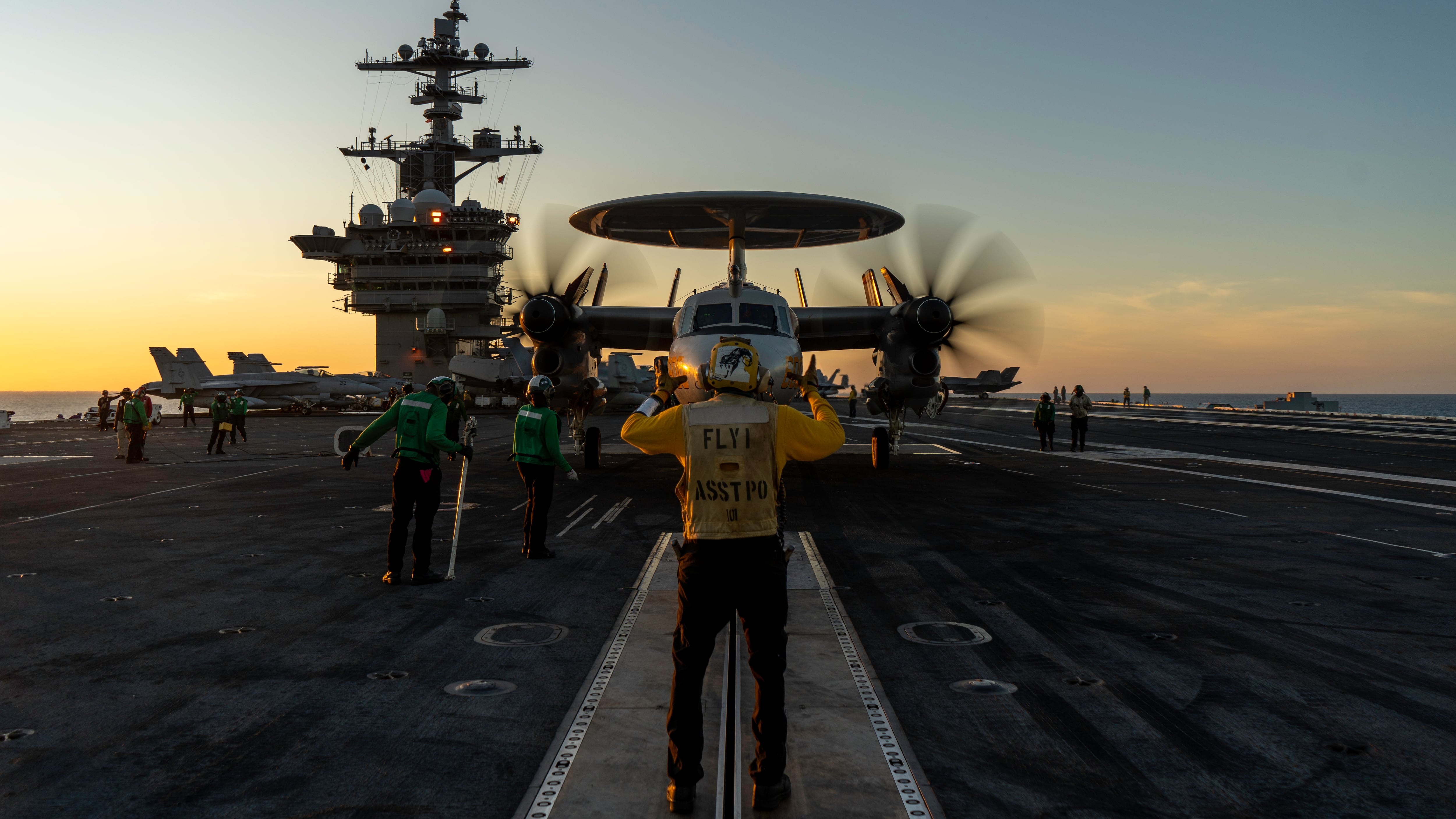More than 16 years and hundreds of deployments into the war in Afghanistan, the story of the first ground troops to strike back after the Sept. 11, 2001, attacks on the U.S. is still a little-known tale.
Or, at least, it was to many members of the cast and crew who are bringing it to life in “12 Strong.”
Details of the mission first came to light in 2009, when author Doug Stanton published “Horse Soldiers,” so named for the equine transportation a team of 3rd Battalion, 5th Special Forces Group operators rode into battle against the Taliban.
On Friday, a Jerry Bruckheimer-produced epic based on the book hits theaters, with Chris Hemsworth starring as Capt. Mitch Nelson, commander of Operational Detachment Alpha 595.
“In 2010, he introduced me to this script, and I was blown away,” director Nicolai Fuglsig told Army Times in a Jan. 6 interview. “So much so that I immediately went and bought Doug Stanton’s book, which blew me even more away.”
If “Mitch Nelson” doesn’t sound familiar, that’s because it’s a pseudonym — the fictional Nelson and Chief Warrant Officer 4 Hal Spencer, played by Michael Shannon, are covers for retired Lt. Col. Mark Nutsch and CW4 Bob Pennington, who asked Stanton not to use their real names when writing the book.
Other team members’ names also were changed, though 3rd Battalion commander Lt. Col. Max Bowers and 5th Group boss Col. John Mulholland went public.
“I never, ever heard about this. I couldn’t believe when I read it, that you had these modern American soldiers riding into battle, alongside these Afghan soldiers, and then on horseback — it was so ‘Lawrence of Arabia,’ ” Fuglsig said.
RELATED
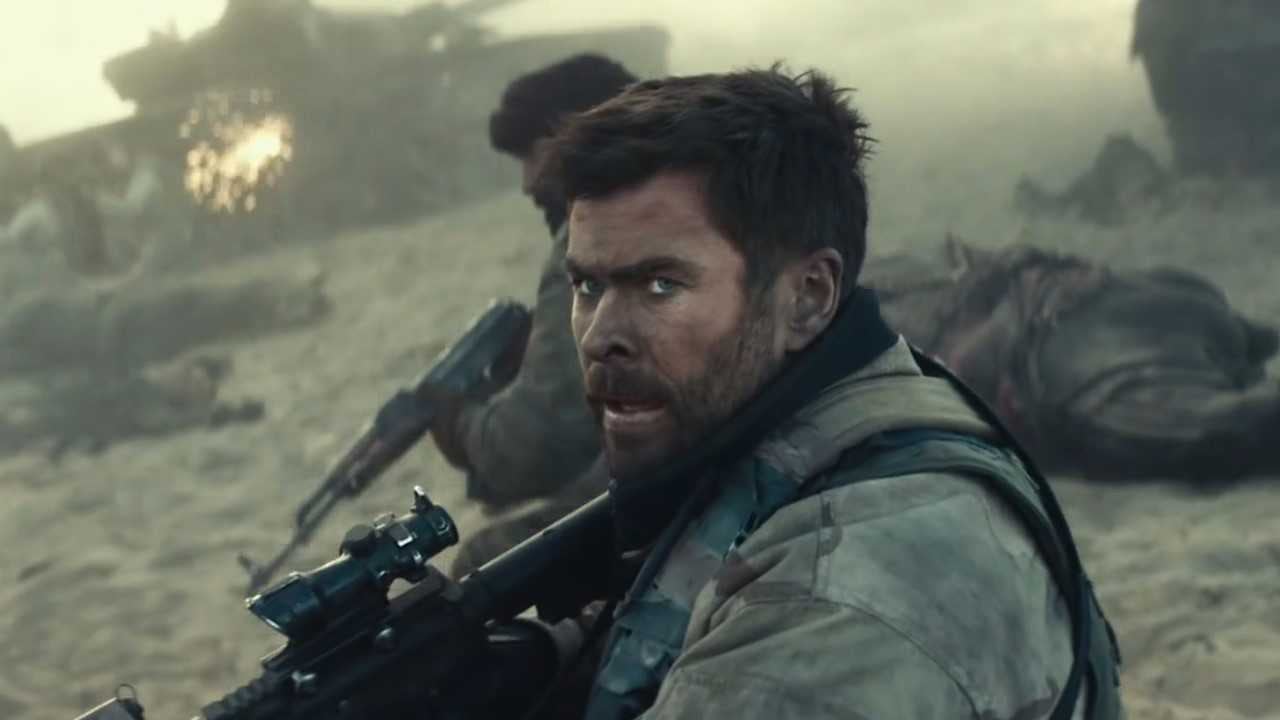
Stanton began reporting for the book in 2003, reading early stories on the Afghanistan war. In an article about so-called “American Taliban” John Walker Lindh, he read a tidbit about Special Forces soldiers who had discovered him during an early battle.
“When I began to think about 9/11, and I discovered that just a very small group of United States Army Special Forces soldiers went into the country — like, that was Plan A?” he told Army Times.
A dozen Green Berets, as part of Task Force Dagger, dropped into Afghanistan and met up with ethnic Uzbek warlord Gen. Abdul Rashid Dostum, who lent them some of the horses he and his men used to get around.
The plan was to make their way to a Taliban stronghold in northern Afghanistan, as units in other parts of Afghanistan followed a similar plan to bring the regime to its knees.
But ODA 595 knew very little about the al-Qaida network in the country, and not much more about the group of warlords who had been waging a decades-long fight against the Taliban.
“These guys had $100,000 bounties on their heads. They didn’t know if they were going to come back alive,” Bruckheimer told Army Times. “They met up with a warlord they knew very little about. They weren’t sure if he was going to ransom them off to the Taliban or he was going to work with them.”
Bruckheimer received a pre-release copy of the book almost a decade ago, he said, and immediately knew he wanted to make it into a film.
“I always like to make movies about individuals that make a difference in our world, and would never be remembered other than through books and films,” he said of a career that includes “Black Hawk Down,” “Remember the Titans,” and “Glory Road.”
Stanton had no qualms about handing the book over to the producer.
“Because I’d been a fan of ‘Black Hawk Down’ and Jerry had produced that, I knew it was in good hands,” he said.
‘WHAT I NEEDED TO KNOW‘
During the development process, the team set up a meeting to discuss the script with retired Marine Lt. Col. Rob Riggle, who made his name as a correspondent on “The Daily Show” and in a subsequent career as an actor and comedian.
“Like any good salesman ― salesman of myself ― I said, ‘Hey, listen. If you ever end up making this, I’d love an opportunity,’ “ he told Army Times.
RELATED
Watch the new trailer for ‘12 Strong,’ the story of Green Berets who helped overthrow the Taliban
He said he wanted to be involved because it was a great story of 21st-century warfare, considering the medieval transportation. But also, he had been part of the operation.
Riggle, who was assigned to a Manhattan reserve unit at the time of the attacks, had spent the remaining days of September 2001 cleaning up rubble from the World Trade Center.
Knowing there would be an operational response, and that he had the top secret security clearance required, he volunteered to go back on active duty.
By Nov. 17, 2001, he was reporting to U.S. Central Command headquarters in Tampa, Florida, and, two weeks later, landed in Afghanistan.
“So it was boom, boom, boom,” he said.
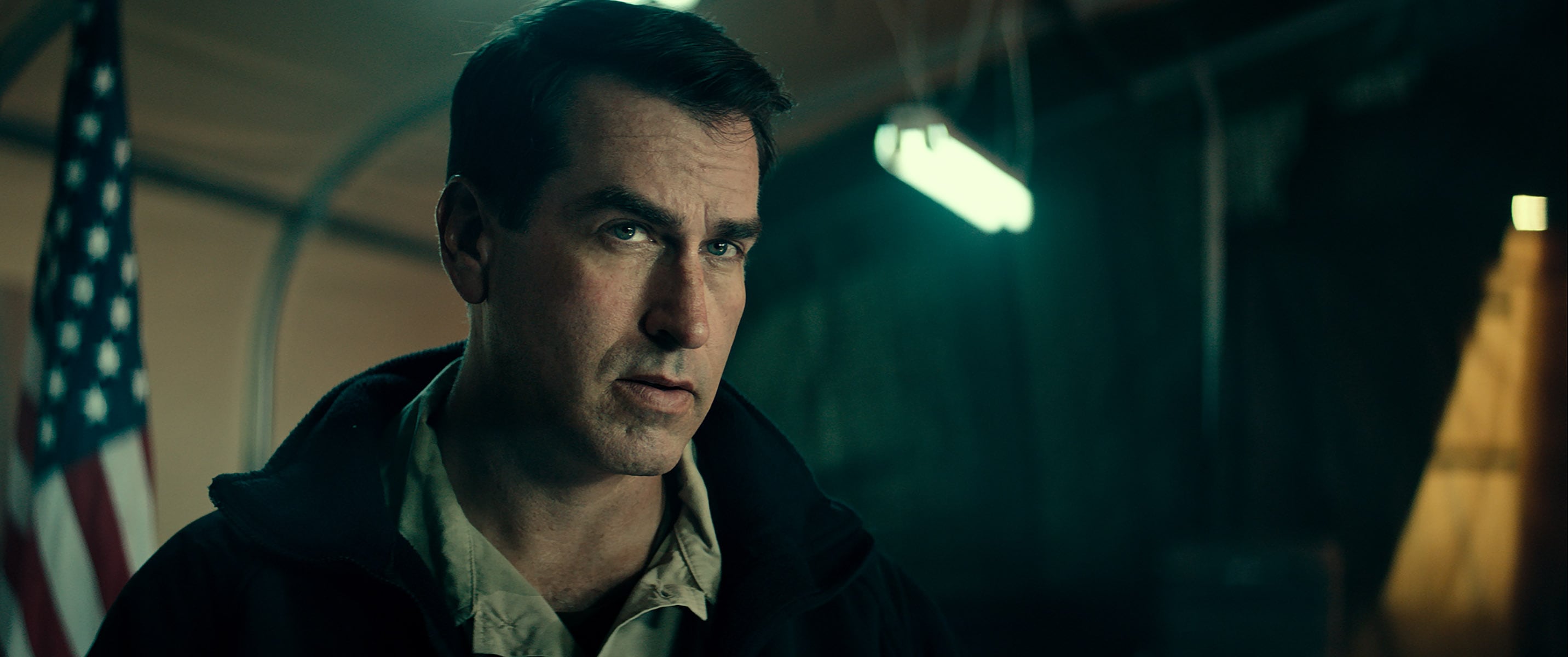
There, he served as a civil and public affairs officer with 3rd Battalion’s command group, under a now-retired Bowers. Not coincidentally, Riggle plays his former boss in “12 Strong.“
“I had a script, I tried to extrapolate what I knew of the man, what I knew of the situation,” Riggle said. “We had a lot of meals together. I heard a lot of stories.”
Set up in an abandoned Turkish high school, he recalled, news of Task Force Dagger’s success trickled in. In total, eight ODAs worked together in northern and southern Afghanistan to secure a Taliban surrender by December.
RELATED
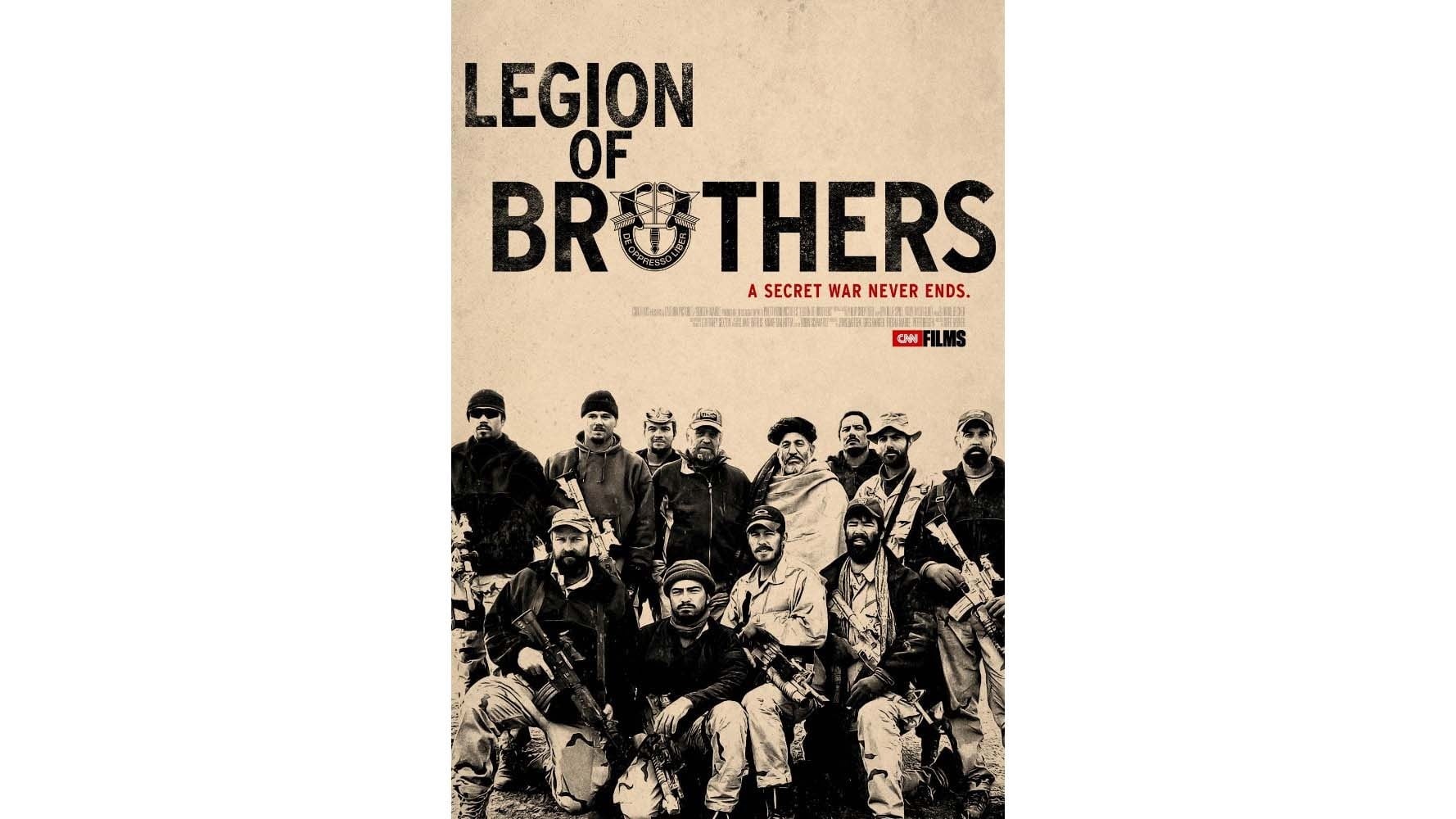
“I knew what I needed to know, and that was fine with me. It wasn’t like I was just popping in for the gossip,” Riggle said. “Just sitting around, listening to briefs. You can pick up things through context clues in some of these meetings, and you hear stories.”
He hasn’t talked to Bowers since then, he added, but he anticipated running into him at the premiere.
“If he is [there], I will see him, and hopefully he will be OK with everything,” he said. “If not, I’m sure he’ll tell me.”
The fact that troops are still fighting in Afghanistan today wasn’t lost on Riggle.
“I don’t want to get into the politics of it, but yeah, it’s 17 years and we’re still there. Maybe that’s just how this one’s going to go,” Riggle said. “I’m glad the story’s being told, because Americans ― as citizens ― we need to know.”
GETTING IT RIGHT
“Every actor, at least that was on this project, wants to get it right,” Riggle said. “They just want to be honest.”
That started with a Hollywood-style military boot camp and horseback riding lessons.
Then Nutsch and Pennington spent two days on set during filming, Fuglsig said, where Nutsch had some very clear advice.
“His biggest concern, and advice, was not to f--- it up,” Fuglsig said.
And, without turning the movie into a political treatise, to convey that ODA 595 and their partners were not there to be the conquerors bringing Afghanistan and the Muslim world to heel.
“To get the part about the fact that we are not at war with Islam,” Fuglsig added. “We are fighting a common enemy, and that is religious extremism. And the fact that there was bravery on both sides.”
Hemsworth spoke at a recent news conference about the inspiring experience of meeting Nutsch and Pennington.
“The way they were able to adapt and evolve and embed themselves within this world, and work with the local people — not against them — working with them and fighting a common enemy,” he said. “And the brotherhood they formed with the local Afghan people, but also among the soldiers was something that kept coming up among all the guys I spoke to in this experience. And the relationships they still keep with one another, to this day, are as strong as any family bond.”
Hemsworth declined to be interviewed by Army Times.
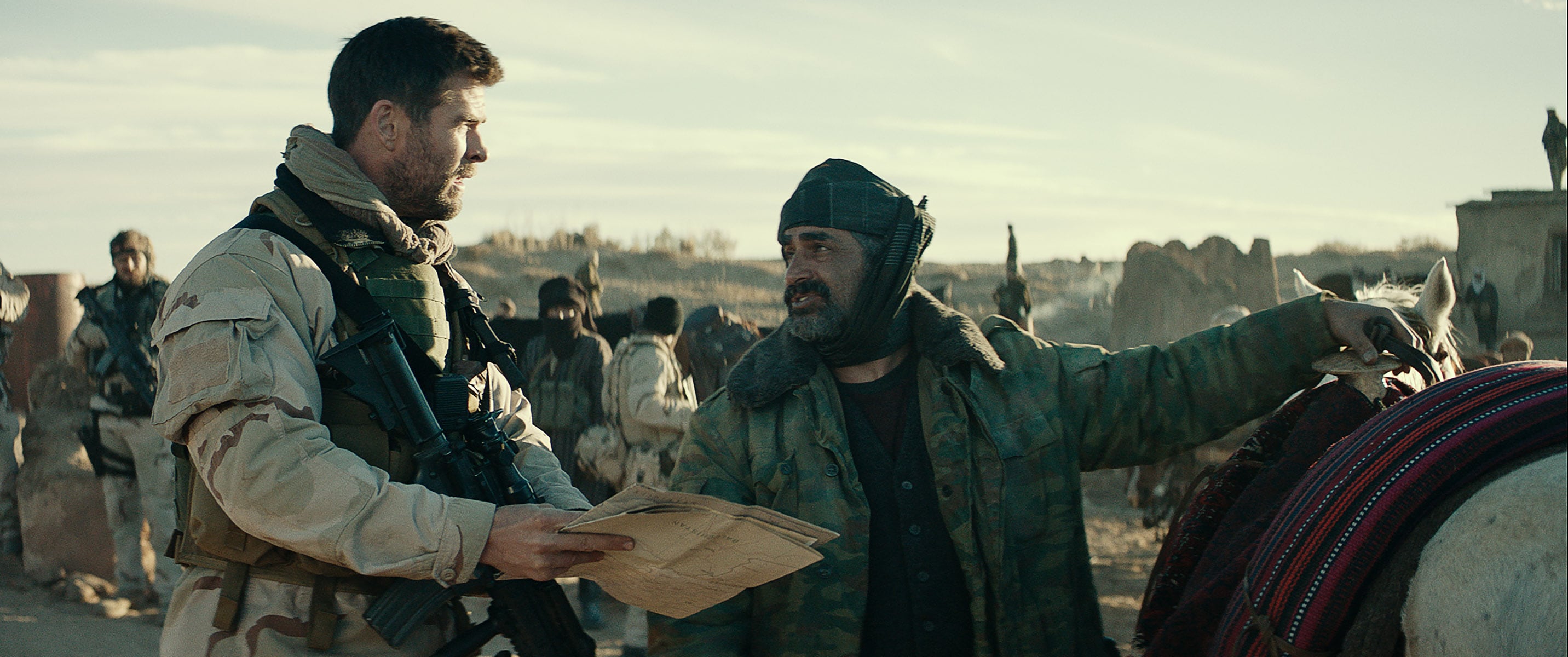
For Fuglsig, a Danish director in the midst of his first feature length film, telling ODA 595’s story hinged on two things: Properly recreating the story and characters, but also re-creating the environment of barren, high-altitude mountains as winter approached in the Hindu Kush.
“I wanted this to be a true portrayal of American heroes, and Afghan heroes, more than we’ve seen,” he said.
Fuglsig and his team settled on New Mexico, specifically the area around White Sands Missile Range, to recreate the rough terrain where hundreds of Afghan soldiers rode on horseback into battle against tanks.
“There are too many movies that have tried to recreate the landscapes of Afghanistan, and I feel that many of them have failed,” he said. “The landscape is a very important character in this movie.”
ODA 595 was working against the clock as winter rolled in, but New Mexico had one hitch.
“Let’s nuke the goddamn juniper, you know?” he said. “Juniper became my number one enemy.”
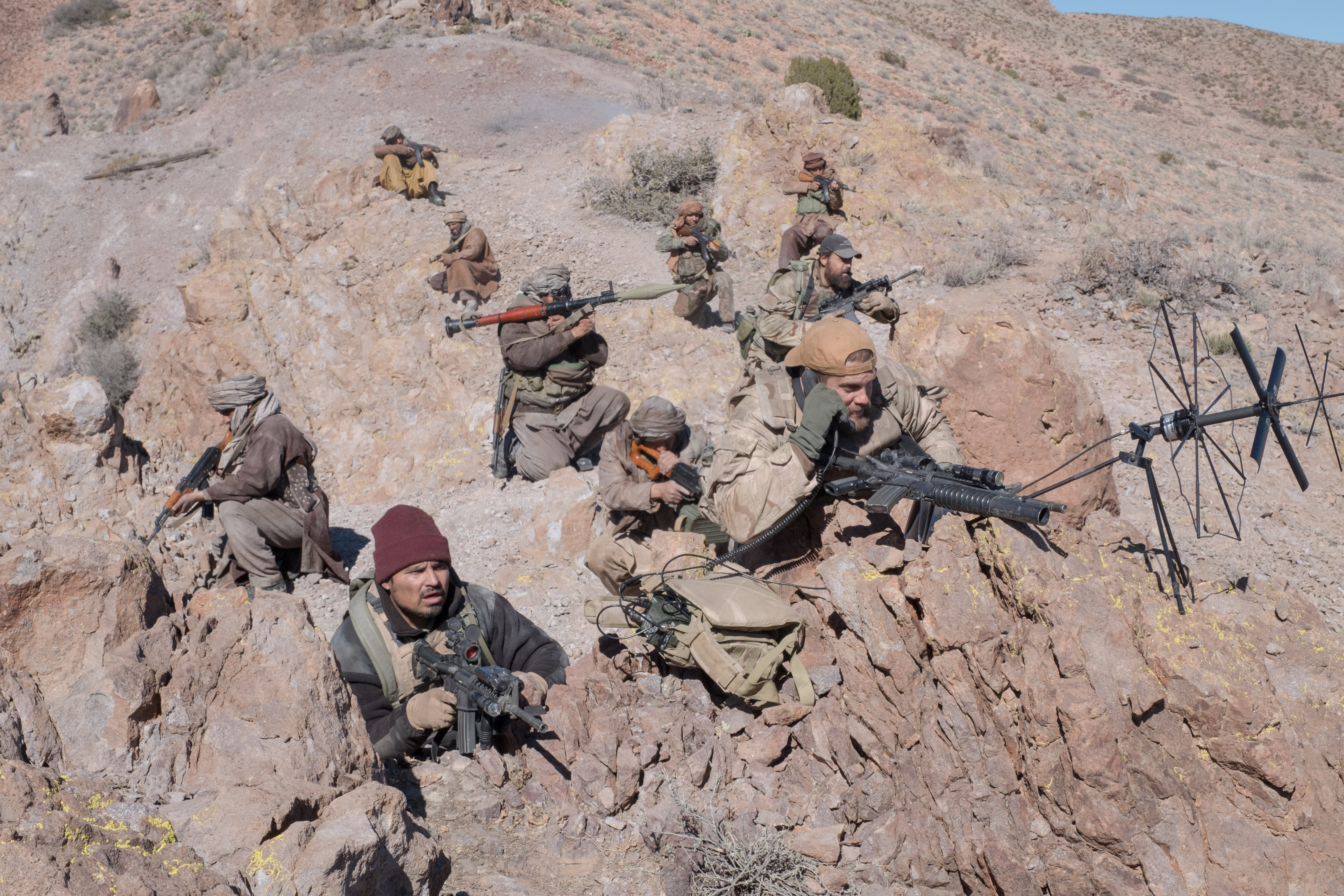
So for the culminating, third-act battle scene, they chose a range that had taken so many bombing hits that almost everything ceased to grow.
The producers also made it a point to get MH-60 Black Hawks and MH-47 Chinooks from the 160th Special Operations Aviation Regiment, a U.S. Special Operations Command unit that regularly flies high-level infiltration and exfiltration missions, on film.
“Every helicopter you see in the movie is an actual 160th helicopter,” Lt. Col. Robert Bockholt, spokesman for Army Special Operations Command, told Army Times. “Because those are the ones who flew those actual insertion missions.”
There was some tension, however, over Bruckheimer’s choice to tap former Petty Officer 1st Class Harry Humphries, a Navy SEAL, as a military adviser. Their relationship dated back to “Black Hawk Down.“
“First of all, combat is combat. One of our actors was a Navy SEAL,” Bruckheimer said. “To organize and work with actors is much different than working with the military. The adviser we had has worked on numerous films and understand how to deal with actors.”
In the end, the Pentagon approved the script and signed off on the final product, part of their contract arrangement, Bockholt said.
“The movie is primarily about one ODA, but what viewers should realize, they were not the only ODA in the country at that same time,” he added.
In preparation for the world premiere, Warner Bros. rented out dozens of theaters to show the film to Special Forces and other soldiers at posts stateside, as well as near U.S. Special Operations Command in Tampa and in Afghanistan and Iraq.
“I think they were happy with the portrayal, even though obviously, we couldn’t tell the entire story,” Bruckheimer said. “There were so many things that were left out.”
Stanton also was happy with the way it turned out, he said.
“He was keen, and so was Chris, on making it clear that this was not an invasion,” he said of Bruckheimer. “And this was all in the script. There really isn’t any chest-thumping.”
“This was never going to be a Rambo-esque film, though I enjoyed that movie,” Bruckheimer said. “This was going to be different, because this is a true story.”
Meghann Myers is the Pentagon bureau chief at Military Times. She covers operations, policy, personnel, leadership and other issues affecting service members.
